Perennial, occasionally annual curly, peeling or clinging lianas with thin stems and often with underground tubers, less often with overhead caudes.
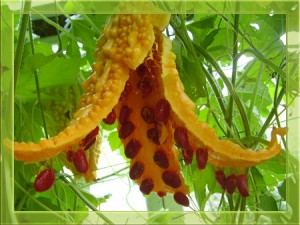 Rod includes 40 to 60 species common in Paleotropy, mainly in Africa and in tropical and subtropical areas of Asia. Several species (most often M. Balsamina and M. Chararrtia), the fruits of which are eaten, cultivated in the tropics and subtropics of the whole world: in Central and South America, Australia, in the Caribbean countries, Southeast Asia, Indonesia, in South Europe, etc.
Rod includes 40 to 60 species common in Paleotropy, mainly in Africa and in tropical and subtropical areas of Asia. Several species (most often M. Balsamina and M. Chararrtia), the fruits of which are eaten, cultivated in the tropics and subtropics of the whole world: in Central and South America, Australia, in the Caribbean countries, Southeast Asia, Indonesia, in South Europe, etc.
M. Balsamina, M. Charantia, M. Cochinchinensis and M. Dioica are usually grown as vegetable plants. Their fruits are rich in calcium, phosphorus and carotes, however, have a bitter taste that disappears after thermal processing. Food also use leaves, seeds and tubers. Many species are used as medicinal plants. Fluids and seeds contain substances, in particular, normalizing blood glucose levels (like insulin) - they are used to treat diabetes. Seeds are used for peptic ulcer, as a diuretic, anti-inflammatory and anti-cooled agent, as well as to strengthen the immune system. The leaves are applied to the wounds when snake bite.
The fruits of M. Charantia can increasingly be purchased in domestic markets (especially in the south). Many amateur gardeners grow it as exotic in the open soil or greenhouses, like cucumbers or zucchini.
 About 10 species of Momordik are of interest to collectors of succulent plants. In meetings, you can most likely see the "classic" M. Rostrata (it has an overhead cakex to 60 cm high and 25 cm with a diameter), very rare - M. BOIVII and M. Sessiliflora. Other species - M. Cymbalaria (\u003d M. Tuberosa), M. Friesiorum, M. Littorea, M. Repens or M. Spinosa are almost unknown and are not available to lovers.
About 10 species of Momordik are of interest to collectors of succulent plants. In meetings, you can most likely see the "classic" M. Rostrata (it has an overhead cakex to 60 cm high and 25 cm with a diameter), very rare - M. BOIVII and M. Sessiliflora. Other species - M. Cymbalaria (\u003d M. Tuberosa), M. Friesiorum, M. Littorea, M. Repens or M. Spinosa are almost unknown and are not available to lovers.
Full CaudEx can only be grown from seeds, although during the griming of momordic can form thickening of the stem at the bottom. Ridden cuttings with 3-5 kidneys are well rooted under the film at a temperature of + 25 ° C in a peat mixture and sand.
Annual seeds M. Balsamina, M. Charantia and M. Cochinchinensis are often offered, it is much less likely to find seeds M. Rostrata, other caudexoftform species - almost impossible. Momaordic seeds are so different in shape and sizes that they can be collected separately. They are rounded or flattened, smooth or with a peculiar non-repeating pattern, resembling an intricate oriental ornament (photo on 3 p.). Seeds without endosperma, consist only of dense peel and embryo with large seedlings. The nutrients needed for germination are inhibited in the semi-units of the embryo. Seeds in the fruit are surrounded by juicy, usually a brightly colored seaming (aryls), rich in starch and carotenoids. In natural conditions, the germ germina uses these nutrients for its growth.
Typically, momords germinate well without any pretreatment and often demonstrate 100% germination. To guarantee the receipt of men's and women's individuals, it is necessary to sow at least 5-10 seeds. Despite the solid shell, they do not need scarification. Before sowing them for disinfection, it is possible to tweak the potassium permanganate in a light-pink solution of potassium permanganate (mangartee) for disinfection. It is impossible to keep seeds in the solution for a long time so that they do not fail - such seeds are then poorly germinate in the soil. As many pumpkin, successful germination, the heat treatment of seeds can also help, especially fresh: they are heated in a thermostat, on a lamp with lampshade, on the furnace, etc., for 2 hours at + 55-60 ° C. or 10 hours at + 40 ° C. You can also warm the seeds in the gauze bag near the heating battery during the week-two at a temperature of + 30-35 ° C, or a month and a half at + 22-25 ° C. You can place seeds into a tightly closed bank and immerse in water at a given temperature. It follows only completely dry seeds, otherwise they can be twisted. Exercising such an action for the first time, it is better to share seeds for the reinsurance: one to warm up, and others - just soak in manganese. Seeds are sown by putting them on the edge, one in some pots to a depth of 5-8 mm. For sowing, it is not too fertile, a well-permeable substrate with the addition of inert bars - sand, small gravel or clay. Sowing containers are impregnated with water, covered with glass or film and placed in a warm half-directed (without a straight sun). The coating should not be too low above the soil, since the seedlings appear from the ground with a height of several centimeters. It is necessary to monitor that during the entire period of germination the substrate was constantly moderately humid, and the temperature never fell below + 1.8 ° C (optimal + 22-25'c).
Swords usually appear within 10-20 days. They very quickly gain strength and after a few days among the seedlist leaves appear real leaves, and hypocotyl (part of the stem under seedlings) is thickened. During this period, it is important to prevent the soil drying, and move the pot into a lighter place, but not under the right sun.
Seedlings are better not to transplant too early - with damage to the root system, they are ill and may even die. If necessary, they can be carefully translated into a more spacious dishes, without destroying the earthen com. For the active development of the above-ground part of the plant need a support that can withstand the thick weave of the stems.
Although the caudexophobe momords negatively relate to excess moisture in the soil and air, in summer they are watered regularly and abundantly after drying the substrate. At temperatures above + 30 ° C, it is necessarily necessary for the influx of fresh air. Adult plants will not laugh with shading, with a lack of light they bloom badly, and the wounds can crumble.
In the fall, the above-ground part is dying, and the caudes contain dry at the minimum temperature of + 12 ° C. Any moisturizing in this period is contraindicated. Large caudes can dry dry even without substrate.
As a rule, in comfortable conditions, even young momords bloom easily and bloom long. Flowers are correct, five-pack, different values \u200b\u200b(for example, M. Dioica, they are 5-6 cm with a diameter, M. Rostrata - from 1.5 to 3 cm, and M. Boivinii is only 1 cm), usually yellow or orange rarely white. Women's flowers are always single, and male are collected by a few in loose umbrellas, brushes or bundles. Plants are most often divers, that is, men's and women's flowers are developing on various copies, but some species. However, for example, M. Boivinii and M. Sessiliflora. There is information that dwarm views in culture are often disclosed on one instance41 male and female flowers. At the very least, such "forced transformations" have repeatedly marked at M. Rostrata.
During flowering, it is necessary to transfer pollen from the stamens of male flowers on the stilts of female from the plants on the plant, or on one plant.
Momaordic fruits have different lengths and shape, when ripening is usually yellowed or blushing, and, for example, M. Boivinii and the ripe remains greens. To obtain "good" seeds, it is not desirable to leave a lot of fruits on the plant. Dostered fruits are usually wrinkled, sometimes cracking, M. Sessiliflora- dry.
The number of seeds in the fruits is also different: from several tens to 3-4 (M. Boivinii) or 1 (M. Sessiliflora). The collected seeds are laundered from the pulp, dried and stored at room temperature. It is not recommended to store the Momordic seeds in the refrigerator - after a long stay in the cold, they spare worse.
Seeds preserve vitality for several years, at least after 3-4 years of storage of their germination almost does not decrease.
On the note Zhenznikov: Pregnancy is the period when Zheniskah is the weakest and irritable, fiercely with advice and recommendations on the website bemam.ru


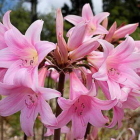
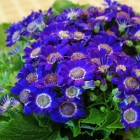
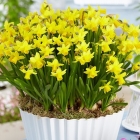
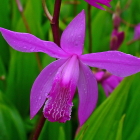
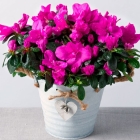
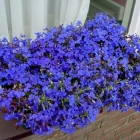
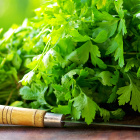
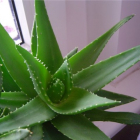

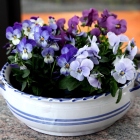
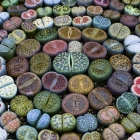
 Start a discussion ...
Start a discussion ...